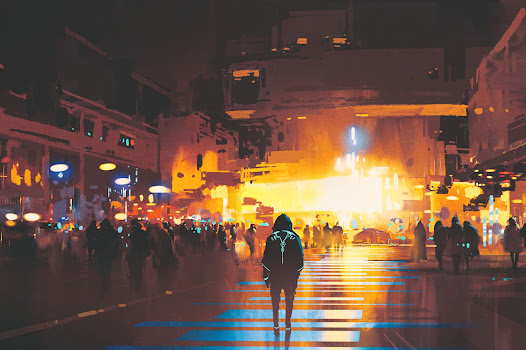There are reasons for this. Altered Carbon, as with precursors like Blade Runner (1982), itself based loosely on the 1968 novel Do Androids Dream of Electric Sheep, is firmly in the cyberpunk genre, and that is quintessentially 1980s. More aptly, we should say cyberpunk is a means of portraying the future from a 1980s perspective.
Richard K. Morgan’s books had to touch on the tone of the 1980s in order to feel like a true cyberpunk book. Movies like Robocop (1987), Dune (1984 & 2021), and the Mad Max series naturally lean this way. Of course, not all movies set in the future are beholden to the 1980s, certainly not in terms of tone. Avatar, for example, isn’t. But the majority of those that deal with gritty subjects like crime are. In short, 80s futurism is one of the most compelling ways for writers to theme their dystopian worlds.
Nostalgia can be an important force in entertainment
Nostalgia and time setting are important tools in entertainment. The moment you hear the intro music to the Duffer Bros’ Stranger Things, you know you’re going back to the 1980s. If you glance at the panels of the pulp-fiction detective-themed Jack Hammer game, it elicits a flood of imagery of the 1950s noir genre. Yet, those are deliberate artistic choices to instill a sense of nostalgia. Cyberpunk tends to be less overt.Rather than provide more examples, the pertinent question might be – why do so many books, movies, and, indeed, games set in the future have a 1980s tonality? The answer is varied, of course. But there are a few lines of reasoning to explore. First, is that there are certain ideas of dystopia that were polished in the 1980s.
Consider what is widely hailed as one of the most influential comic book series of the decade, Alan Moore’s Watchmen, which was published in a maxiseries from 1986-1987. Watchmen isn’t quite cyberpunk, although it shares many of the ideals, nor is it futuristic (it depicts an alternative present). Despite that, Watchmen characterizes a unique 1980s outlook on crime, abuses of power, totalitarianism, and other elements that commonly come up in future-set books and movies.
Another aspect that keeps in tune with the 1980s future vision is the role of the anti-hero. Snake Plissken (Escape from New York), Rick Deckard (Blade Runner), and Max Rockatansky (Mad Max) are among the typical 1980s anti-heroes. Often hard-living, hard-drinking, and undeniably masculine, they epitomize the type of anti-hero characters that have continuously cropped up in the cyberpunk genre. When Richard K. Morgan created Takeshi Kovacs as the ultimate anti-hero for Altered Carbon in the 2000s, there was only one decade he could look back to for inspiration – the 1980s.
Modern fears were born in the 1980s
It was in the 1980s that the wariness over technology began to foment in popular culture. Yes, like everything else, this idea was not created only in the 1980s, but movies like The Terminator (1984) feel like they could only be conceived in a decade when people were finally coming to terms with the rise of the machine. Of course, we can also point out that the '80s vision of the future is altogether more interesting than our own present. A book or a novel where the characters are constantly glued to smartphones would not be as interesting as a battle between rogue robots and humans.Another aspect that keeps in tune with the 1980s future vision is the role of the anti-hero. Snake Plissken (Escape from New York), Rick Deckard (Blade Runner), and Max Rockatansky (Mad Max) are among the typical 1980s anti-heroes. Often hard-living, hard-drinking, and undeniably masculine, they epitomize the type of anti-hero characters that have continuously cropped up in the cyberpunk genre. When Richard K. Morgan created Takeshi Kovacs as the ultimate anti-hero for Altered Carbon in the 2000s, there was only one decade he could look back to for inspiration – the 1980s.
Of course, one might argue that this delves into cliché. There is undeniably a rigidity to setting your future-based story with the flavor of the 1980s. Moreover, many of the perceived threats to the future of witnessed in the 1980s have not come to pass, and many of the perceived future norms have disappeared. For example, there seem to be ubiquitous examples of smoking, including indoors, in future-set cyberpunk stories, when we know that smoking has seen a continuous decline for decades.
But broadly speaking, we could argue that putting an 80s lens through which to view a future works for cyberpunk films and novels. The decade was pivotal in our relationship with modernity, and it began to shape many of the narratives through which we would have hopes and fears for the future.
But broadly speaking, we could argue that putting an 80s lens through which to view a future works for cyberpunk films and novels. The decade was pivotal in our relationship with modernity, and it began to shape many of the narratives through which we would have hopes and fears for the future.
Images courtesy Depositphotos

 shareasale.com
shareasale.com StickerShoppe.com
StickerShoppe.com



 Elfi Santa
Elfi Santa

0 Comments